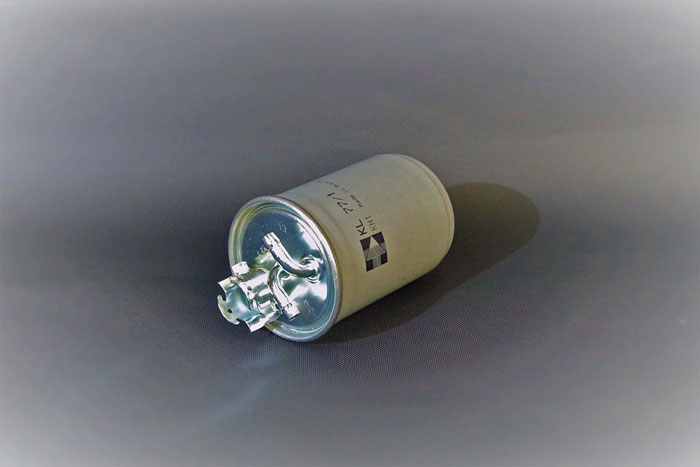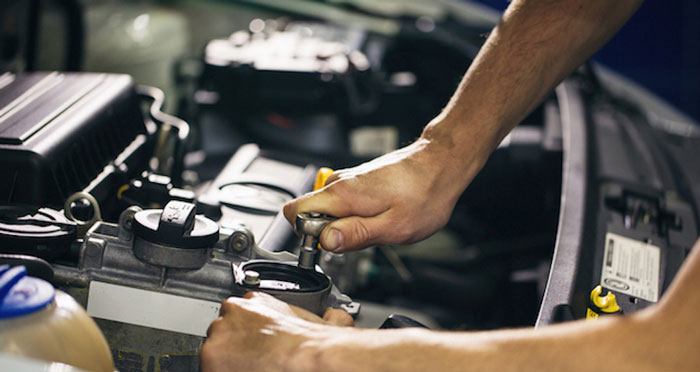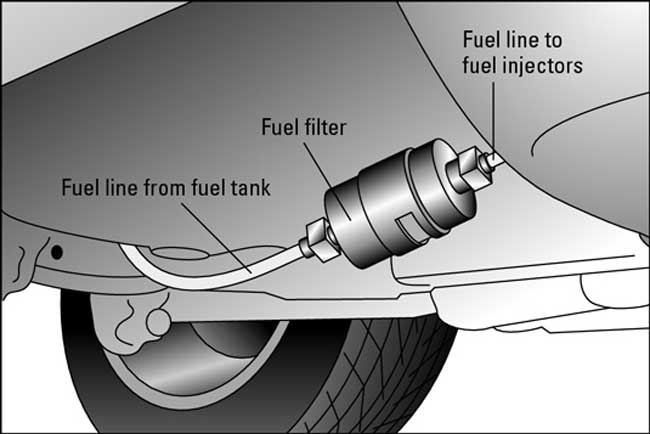How Often To Change Fuel Filter And How Long Does It Take?
by Chris Lewis.
Fuel filters are vital for a motor vehicle’s functioning as they do the mammoth job of keeping the motor oil running through the engine clean by removing harmful impurities and pollutants, hence enabling the vehicle to run seamlessly.
However, with the passage of time, oil filters get blocked with contaminants, which deteriorate their ability to remove further impurities.
Contents
How often to change fuel filter

A recent survey uncovered the undesirable truth that out of every four cars one is running with grimy engine oil or little amount of oil. This implies that less amounts of fuel than usual are coursing through the engine resulting in your vehicle’s slow speeds and reduced performance.
Therefore, replacing your oil filters should be your top priority and overlooking the issue maybe highly detrimental to your engine’s overall health and productivity.
If you don’t replace a faulty oil filter, it will get clogged up, which will cause the fuel pump to strive more laboriously than before in order to drive the oil throughout the system, which will eventually lead to it malfunctioning and becoming useless. Moreover the engine also suffers from the harmful pollutants present in the poorly filtered fuel.
Modern fuel filters come with top grade fuel injectors with small apertures. If the pollutants reach the injector, it may get damaged. This will lead to spilling of oil whereas a thin sprinkling is essential for adequate combustion.
It is good practice to change fuel filters every two years or when your vehicle has completed thirty thousand miles. But this interim can vary in latest models.
This is where your car mechanic comes in. Ask him to do a fuel pressure test. He will work out how much pressure or PSI the fuel pump is creating. A defective oil filter generates less pressure. A fully functioning vehicle generates pressure in the range of 30 to 60 PSI.

You should make an attempt to replace your fuel filter at regular intervals. Latest cars are equipped with a fuel filter in the gas tank. The fuel pump is accompanied by a fuel strainer which needs to be altered only when the whole fuel pump is replaced.
You should turn to your user’s guideline to learn when the vehicle builders recommend replacing your fuel filter. It is highly recommended by them to change the filters after driving twenty to forty thousand miles.
However if the time for replacement is not provided in the guidelines, a tentative timeline would be 1 to 2 years after the car has been purchased. Nevertheless, you should opt to replace it after thirty thousand miles.
On a different note, if you wait for a ninety to hundred thousand miles driving period to replace your filter, your fuel pump will stop working.
This would occur because the fuel filter would become congested with impurities and if you replace it, the oil would become more purified now and surely move more freely than before but the old pump won’t be able to push the now freely moving fuel and thus its lifetime would have expired.
Signs of a damaged fuel filter
- Engine declining or spitting when the vehicle speeds up
- The vehicle does not accelerate
- Engine does not run smoothly
- Vehicle loses its previous strength
- Vehicle does not start
- Gas runs out fast/ mileage decreases
- Notification light for checking engine gets turned on
- The vehicle does not stay started
- Artificial sounds below the hood
- Fuel pressure decreases
- Color of exhaust fumes looks different
How long does it take to change fuel filter?
The fuel filter can be situated in either of the two locations:

- This is the position of the fuel filter under the car as shown in the above diagram. It is positioned in the high pressure fuel line.
- This is another position below the hood in the hood close to the engine.
It may also be located in the fuel pump or exist as a filter screen in the oil tank. In such cases, they should only be replaced by a professional.
The entire process outlined below takes only about 15 minutes. So you need not worry about it being a hamper with your regular life activities.
Steps for changing a fuel filter
1. Before cutting off the fuel line, ease the pressure inside it. In order to do that, disconnect the fuel pump but before that the engine should be turned off. To disconnect the fuel pump, follow these steps:
- Withdraw the fuel pump fuse from its location in the fuse box. Consult your user’s guideline to know where the fuse box is.
- After ensuring that the vehicle’s parking brake is turned on, start the vehicle. The vehicle will stay started only for a short time. The pressure in the fuel lines will decrease.
- The engine should be turned off now. Your fuel pumps have been disconnected, now you can cut off the fuel lines from the filter.
2. Now, check out the appearance of both the old and new filters. There should be an arrow mark on the filters that indicates the direction of fuel flow. This is necessary to know which end of the filter should be placed where.
3. Remove the old filter from its position near the fuel line.
4. Place the new filter in the position of the old one.
5. Ensure it sits firmly.
6. Return the fuse for the fuel pump back in its place inside the fuse box.
7. Ensure that the vehicle is in parking mode, start the vehicle and examine if there are any leakages in the fuel filter.
A passenger fender is a plastic cylinder that is attached to a car’s side to protect it from collisions. You should remove a small object held together by four bolts near the passenger fender. The filter now becomes visible which is held in place by two bolts.
You can easily undo the first bolt but need a hinge to remove the intake manifold that is covering the second bolt. An intake manifold equally spreads the combustion composition across the ports in the car’s cylinder’s ends. After removing the intake manifold, now you got the second bolt off too.
Remove the fuel lines. Place the new filter near the fuel lines using bolts. Ensure that the filter sits securely. This session takes no more than 15 to 25 minutes.
It may take some time to slide off the intake manifold mentioned above. Remove the hose clamp, which is an object that ties a car’s hose to a removable part of the vehicle, for instance a barb.
Use a hinge to keep the hose in place while you move the filter out. It is tightly bound to its spot but slides out quite smoothly. This process takes about less than 10 minutes.
 |
 |
 |
 |

About Chris Lewis.
Chris Lewis is a passionate individual with a deep affinity for the world of automobiles. From a tender age, his fascination with cars was nurtured by his father, a seasoned mechanic based in the vibrant city of San Francisco. Growing up under the watchful guidance of his skilled father, Chris developed an early aptitude for all things automotive.
Thoughts on "How Often To Change Fuel Filter And How Long Does It Take?"
 |
 |
 |
 |
Check These Out
Get FREE Filters now. Or latest free tools from our best collections.
Disable Ad block to get all the secrets. Once done, hit any button below
 |
 |
 |
 |